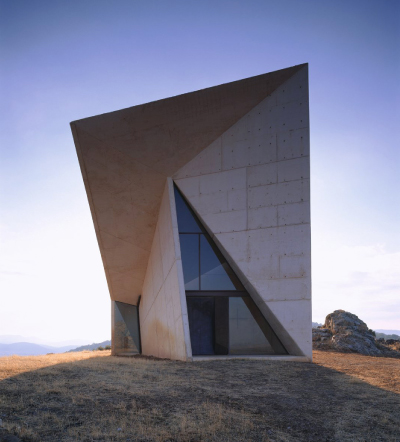
Chapel, Valleaceron, Spain, 2001. By Sancho Madridejos Architecture Office, from Closer to God, Copyright Gestalten 2010. (Click image to enlarge.)
The controversy over the construction of an Islamic cultural center near Ground Zero is surprising when one remembers that New York City is already rich with churches, temples, mosques, and storefronts selling supplies for vodun and santeria rites. It’s hard to remember when another building has caused such a fuss. What is it about this structure, which isn’t even a proper mosque, that stirs up such strong emotions? At a time when our culture seems to have become largely secular, how can a religious building still be regarded with talismanic powers?
A new book that looks at contemporary houses of worship, “Closer to God: Religious Architecture and Sacred Spaces,” takes up that very question. The structures pictured are eclectic in style, scale, materials, and in the different religions they shelter. There’s a one-person meditation hut in rural New England, an intimate Buddhist shrine in Kyoto, and an auditorium-sized cathedral in Rome. There are churches poured in rough concrete, others built with engineered glass curtain walls, and one clad in battered zinc panels.
If there’s anything these buildings have in common it’s the way that they employ pure geometries and natural light to evoke a spiritual dimension. In this sense, contemporary architects are following in the footsteps of their ancient counterparts. The use of idealized geometries like squares and circles, and the dramatic manipulation of daylight, are practices characteristic of traditional Judeo-Christian and Islamic architecture.




 Facebook
Facebook Permalink
Permalink Digg
Digg Reddit
Reddit LinkedIn
LinkedIn StumbleUpon
StumbleUpon Tumblr
Tumblr

